Flavorful lemon balm pesto - the best thing you can do when you have a huge bush of lemon balm growing in your garden.
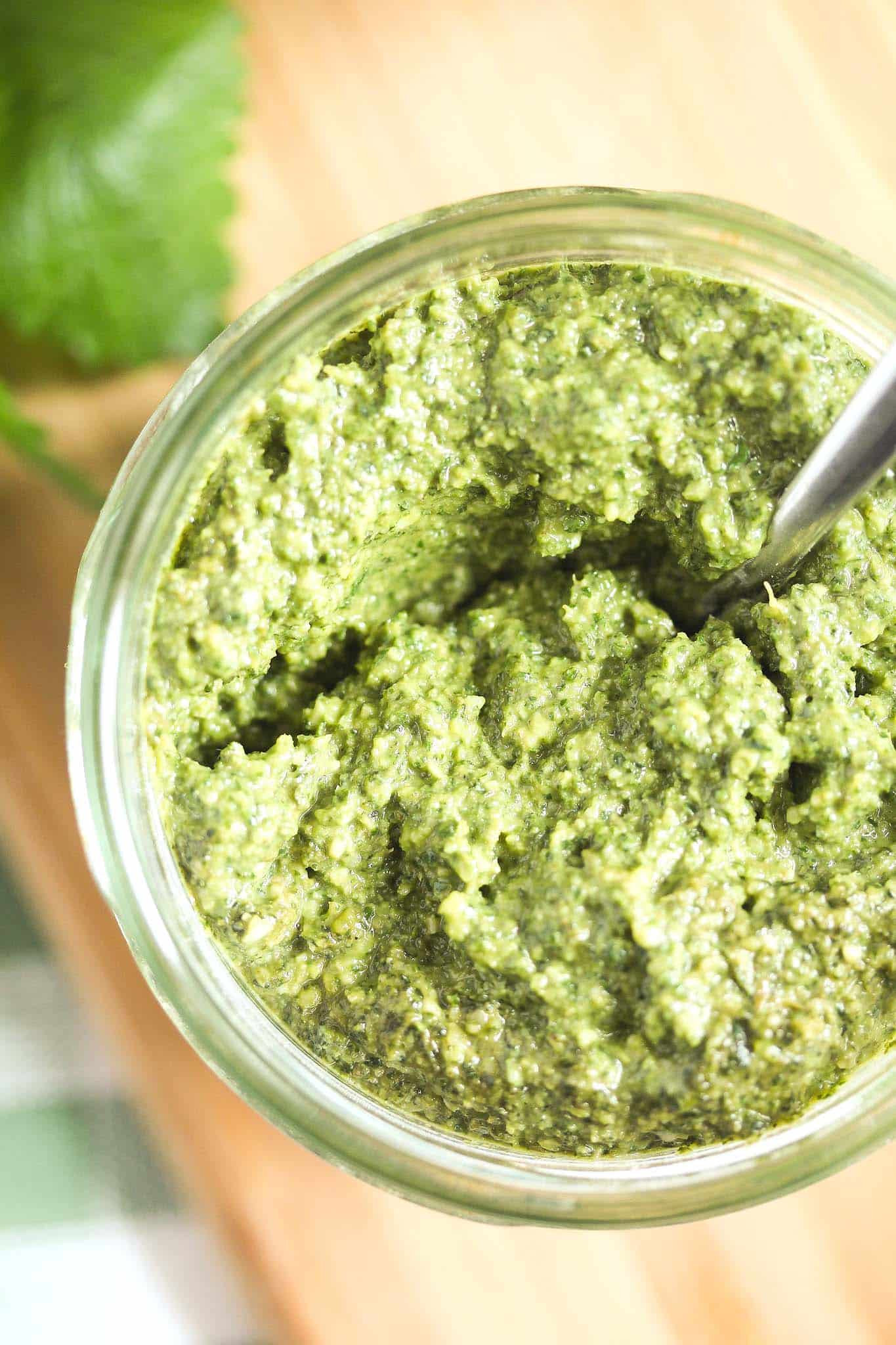
Lemon Balm Recipe
This fresh lemon balm pesto recipe is a family favorite. We all love pesto; I make huge batches of wild garlic pesto every spring, a pungent, sharp, and incredibly flavorful sort. The lemon balm version is milder, more aromatic, citrusy, and utterly delicious as well. It's my son's favorite kind.
What is lemon balm?
Melissa officinalis is a perennial plant from the mint family. It looks a bit like mint, but it has a lighter, more vivid green color, larger leaves, and grows into huge, tall bushes. If you plant a small plant for one year, you will be rewarded with an enormous bush the next year. Actually, you might want to trim it from time to time to prevent it from getting too big.
Melissa doesn't taste like mint (a hint maybe, but not more than that); it tastes like lemons. A subtle, incredible aroma you will love.
Historically, the plant had mainly medicinal uses, the second part of its Latin name "officinalis" being a clear indication of that. It means "of the shop" and shows that the plant was used by apothecaries.
Nowadays, it is widely used in alternative medicine, as a sleep or digestive aid, or to make cosmetics, perfumes, and so on.
Lemon balm in cooking
This is the part that interests me the most. At least ¾ of my bush goes into making several batches of lemon balm pesto every June. I freeze the small jars so that we can enjoy these wonderful flavors until the next season.
Syrup - I make a few bottles every year; it's dead easy. We drink it with cold sparkling water, and I often add it to cocktails or other alcoholic drinks when we have guests. It is also great for adding flavor and moisture to the base of a cake before adding the other fillings. I make the syrup exactly how I make this Mint Syrup.
Tea - steep a handful of leaves in hot water. Serve as it is or add honey and freshly squeezed lemon juice to taste. The tea has a soothing, relaxing effect, we prefer to drink it in the evening. You can also dry the leaves, crush them, keep them in airtight containers, and use them to make tea as well.
Salads - add a few chopped leaves to salads, or use them to make the salad dressing, a vinaigrette for instance. You can also add some freshly chopped leaves to a simple yogurt dressing.
Vinegar or oil - herb-infused vinegar or oil is amazing for salads to drizzle over finished dishes like soups, chicken, or fish.
Butter - chop a small handful of clean and dry leaves and mix with soft butter, salt, pepper, and some fresh lemon juice to taste. Freeze it in small portions if desired. Or add to a compound garlic herb butter using a mix of fresh herbs.
Cake fillings - add a few very finely chopped leaves to cake fillings made with whipped cream, buttercream, or cream cheese.
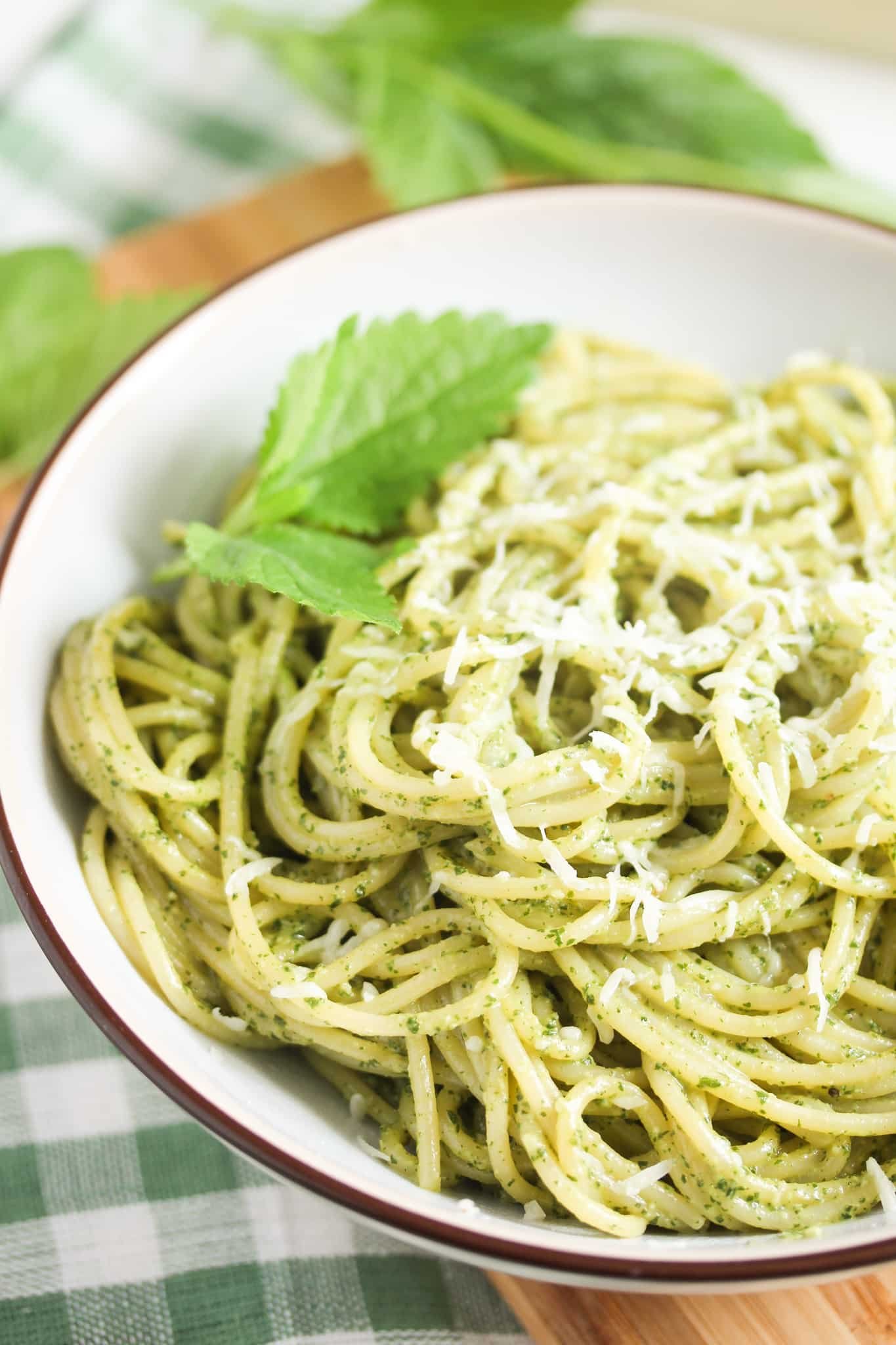
What do you need for the pesto?
- Fresh lemon balm leaves
- Parmesan or Pecorino Romano - I use whatever I happen to have at the moment; we love both versions
- Almonds - raw, whole almonds with their thin brown peel still on
- Olive oil - make sure to use a mild sort; if it is too bitter, you will taste it. Alternatively, use half olive oil and half a neutral-tasting vegetable or avocado oil; it has a milder flavor.
- Lemon juice - freshly squeezed
- Garlic - about 5 medium cloves for one batch; use depending on their size and your taste
- Salt and pepper
Variations
- Replace about ⅓ of the lemon balm with fresh basil leaves.
- Use pine nuts instead of almonds; they taste amazing but are pricey. Or sunflower seeds.
- I've also seen recipes using walnuts, but I've never tried that.
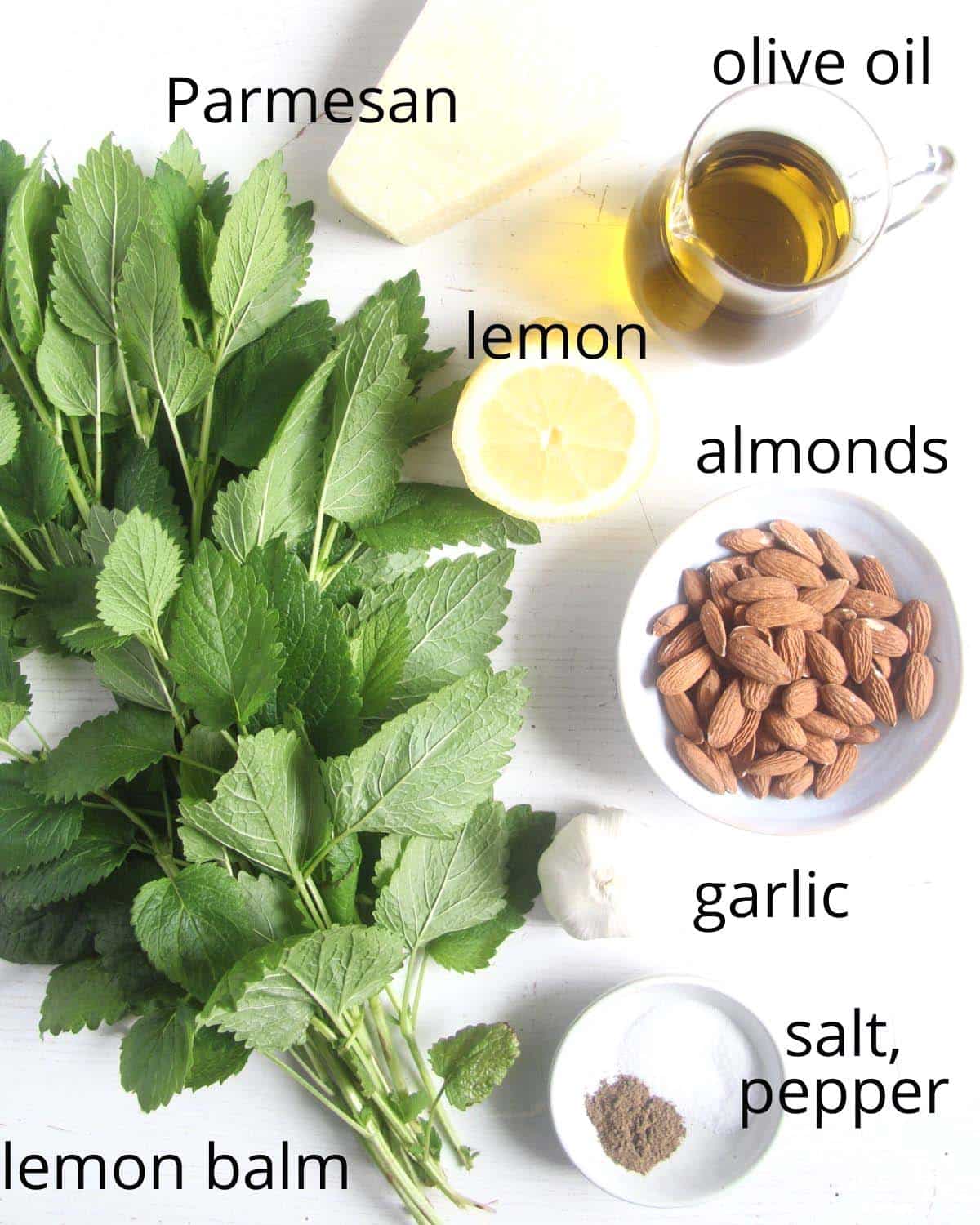
How to make pesto with lemon balm?
- Wash the herbs very well. Spread on clean kitchen towels and use another towel to pat them dry.
- Remove the leaves from the stems and weigh the needed amount of leaves. Discard the stems.
- Chop them roughly and place them in a food processor. Process to a rough paste. (1)
- Add the remaining ingredients: cubed cheese, whole almonds, roughly chopped garlic, lemon juice, salt, pepper, and oil.
- Process everything to obtain a smooth paste. Scrape the walls of the food processor a few times in between. (2)
- Transfer the pesto into small jars, pressing well with a teaspoon to avoid air holes.
- Place the lids on the jars, but don't screw them too tightly if you intend to freeze the pesto.
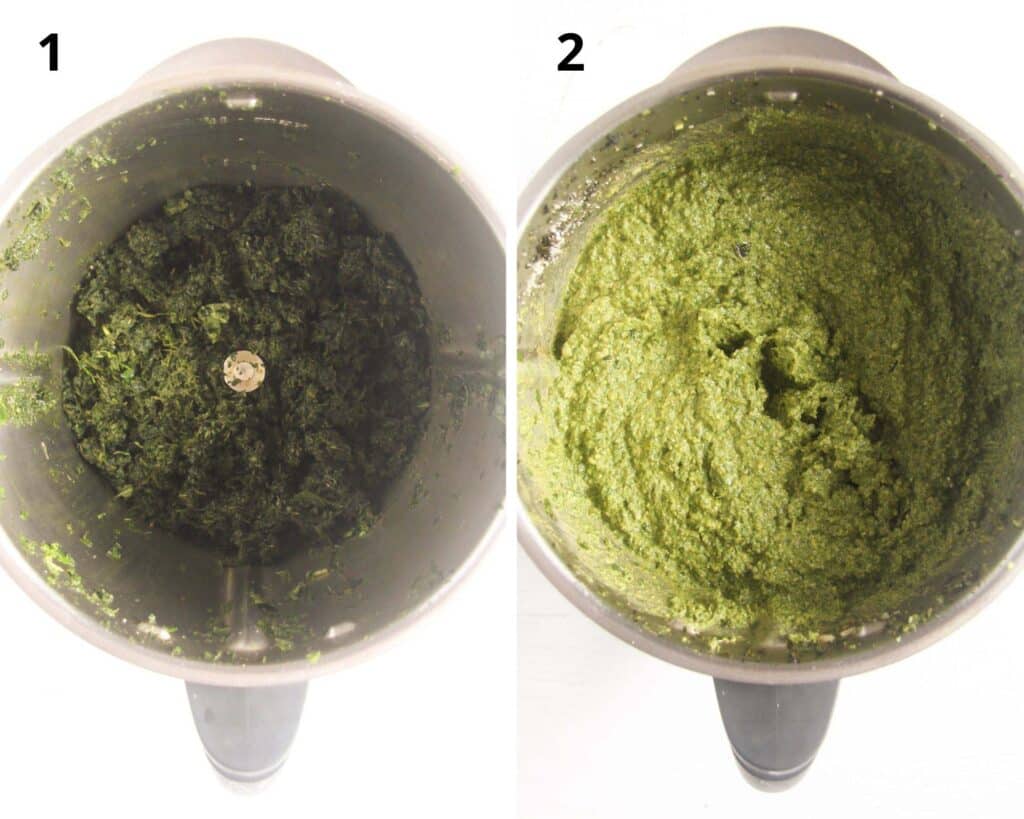
Scaling
You can scale the recipe as much as you want or as much as it fits in your food processor. I always make the triple batch in my Thermomix, which is quite a large kitchen gadget.
How to store?
You can keep the lemon balm pesto in the fridge, covered with a thin layer of oil, for at least 2 weeks.
To keep it for longer, freeze the jars. They will be fine for at least one year. I've had some lost jars in the freezer for over two years, and the pesto was still delicious. Defrost on the counter or in the fridge.
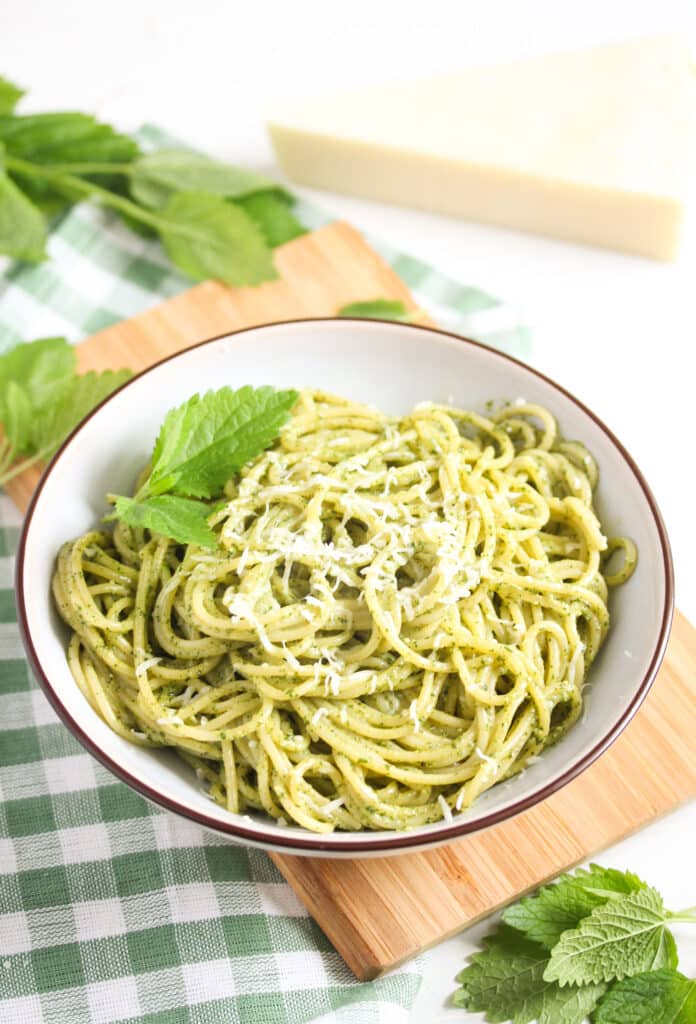
How to use it?
- Make lemon balm pasta, it tastes delicious. Cook the spaghetti or other pasta. Drain, but reserve about ½ cup of the cooking water. Mix pasta with pesto and add some of the reserved water, little by little, stirring until the pasta is slightly glossy and coated with the sauce.
- Use as a spread on bread and top with Camembert, cheddar, or other cheeses. I love it on dark rye bread or Pumpernickel.
- Make Zucchini with Pesto, Zucchini Feta Pancakes with Herbs, Pesto Vegetable Pasta.
- Mix it with feta or cream cheese and make a delicious bread spread.
- Add to soups, stews, or other dishes. I find it great with fish, especially with salmon.
- Make tortilla wraps, top with some veggies or cooked chicken, and some cheese.
- Make pesto bread.
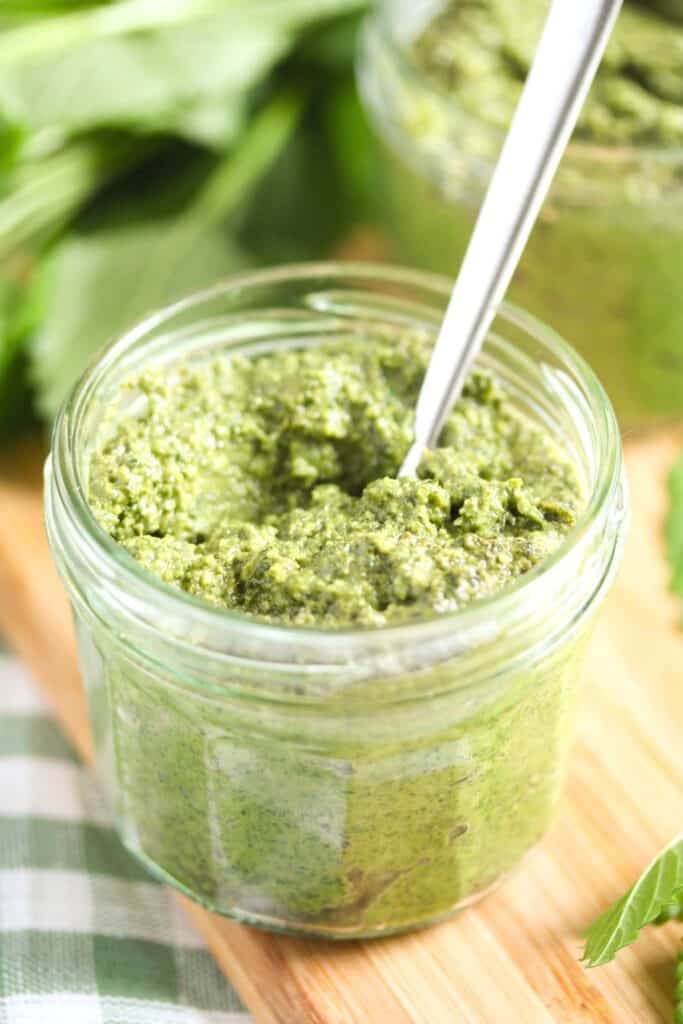
More ways to preserve fresh herbs
- Parsley Paste (Herb Paste with Garlic)
- Wild Garlic Oil
- Wild Garlic Salt
- Preserved Wild Garlic
- How to Make Mint Syrup
Do you like this recipe?
Please leave a good rating in the recipe card below. Stay in touch through social media: Pinterest, Facebook, and Instagram. Don't forget to tag #whereismyspoon when you try a recipe!Recipe
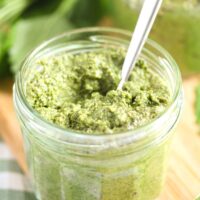
Lemon Balm Pesto
Ingredients
- 120 g/ 4.2 oz lemon balm leaves Note 1
- 50 g/ 1.7 oz/ ½ cup Parmesan Note 2
- 50 g/ 1.7 oz/ ⅓ cup raw whole almonds (Note 3)
- 2-3 tablespoons lemon juice freshly squeezed, to taste
- 120 ml/ 4 fl. oz/ ½ cup extra virgin olive oil Note 4
- 5 garlic cloves
- fine sea salt and ground black pepper to taste
Instructions
- Prepare lemon balm: Wash and dry the herbs thoroughly. Remove the leaves from the stalks and weigh the needed amount, only the leaves.
- Process herbs: Chop them roughly, place them in a food processor, and process to a rough paste. Scrape the walls of the machine.
- Add cubed cheese, whole almonds, roughly chopped garlic, lemon juice, salt, pepper, and oil. Process to obtain a smooth paste. Scrape the walls of the food processor a few times in between.
- Transfer to small jars, pressing well with a teaspoon to avoid air holes. Place the lids on the jars, but don't screw them too tightly if you intend to freeze the pesto.
Notes
- Weigh just the leaves, not the stalks.
- Freshly grated cheese from a wedge. Pecorino Romano is great as well.
- With their brown, soft peel still on, they don't have to be blanched.
- Use a mild olive oil, it should not be too bitter, you will taste it if it is. A fruity, mild sort would be great. As an alternative, use a milder oil, like avocado oil or a mix of olive oil and a neutral-tasting vegetable oil, like canola.
- The recipe can be easily scaled. I always make the triple batch in the Thermomix, but that is a large food processor. If you scale the recipe, make sure that everything will fit in your food processor.
- The lemon balm pesto keeps well in the fridge for at least two weeks. To keep it for longer, freeze it, it will keep for at least 1 year.
- The nutrition was calculated considering that 350 g/ 12.2 oz pesto would be around 23 tablespoons of pesto and you would need 2 for one serving. That is, of course, not very accurate, but the best I can offer. The whole batch has 1507 kcal.

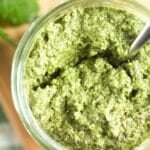
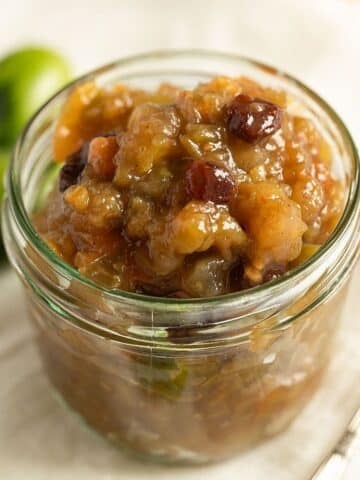
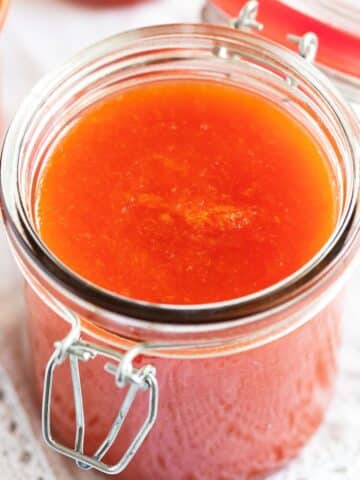
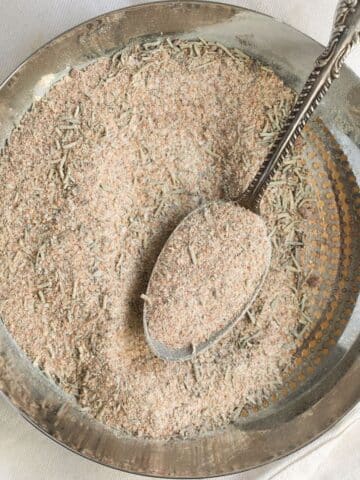
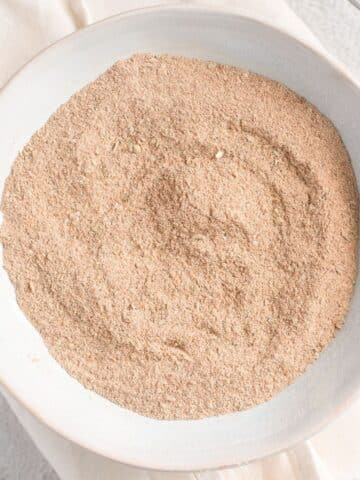

Renita Chen says
I found the texture to be very objectionable. Surprised there wasn't anything said about that, it was like peach fuzz to the point of almost getting stuck in your throat. 2 stars for, flavor is good and was tolerable when mixed with pasta. Will not waste good garlic, pine nuts and parmesan on this again.
Adina says
Sorry to hear that, I never had that problem. You can always add more oil if the consistency is not right.
Mysie says
I have a huge bag of dried lemon balm for tea. Can I substitute this?
Adina says
No. You need fresh herbs for making pesto.
Cat says
I used all lemon balm leaves and had it with a mixed salad with halloumi-delicious!
Maureen Mills says
Did half quantity using 1/3rd basil. Lovely!
Adina says
Thank you for the feedback, I am glad you liked the recipe.
Catherine says
Did it with 30g of lemon balm leaves (after removing the stalks), so I divided all the other quantities by 4. It was absolutely delicious, just enough for two good plates of spaguetti. My husband loved it! Now I know what to do with our huge bunch of lemon balm, the only thing resisting the slugs and snails in our garden! Thank you! (We also use lemon balm leaves as a dessert, cut and mixed with blueberries, hazelnuts and natural yoghurt with a sprinkle of chocolate and all spice- also yummy!)
Adina says
I am so glad to hear it, Catherine. I will make it again the next days, the lemon balm bush in my garden is huge.